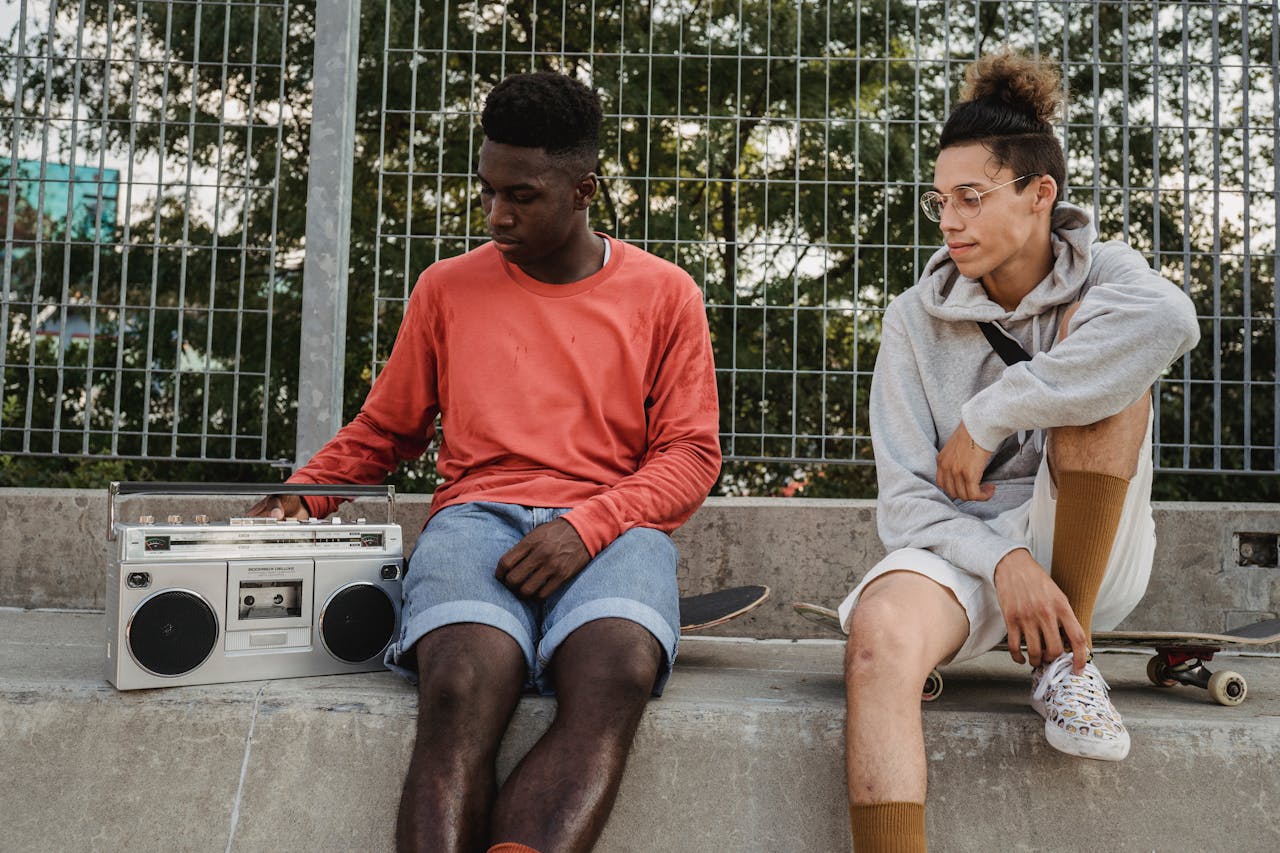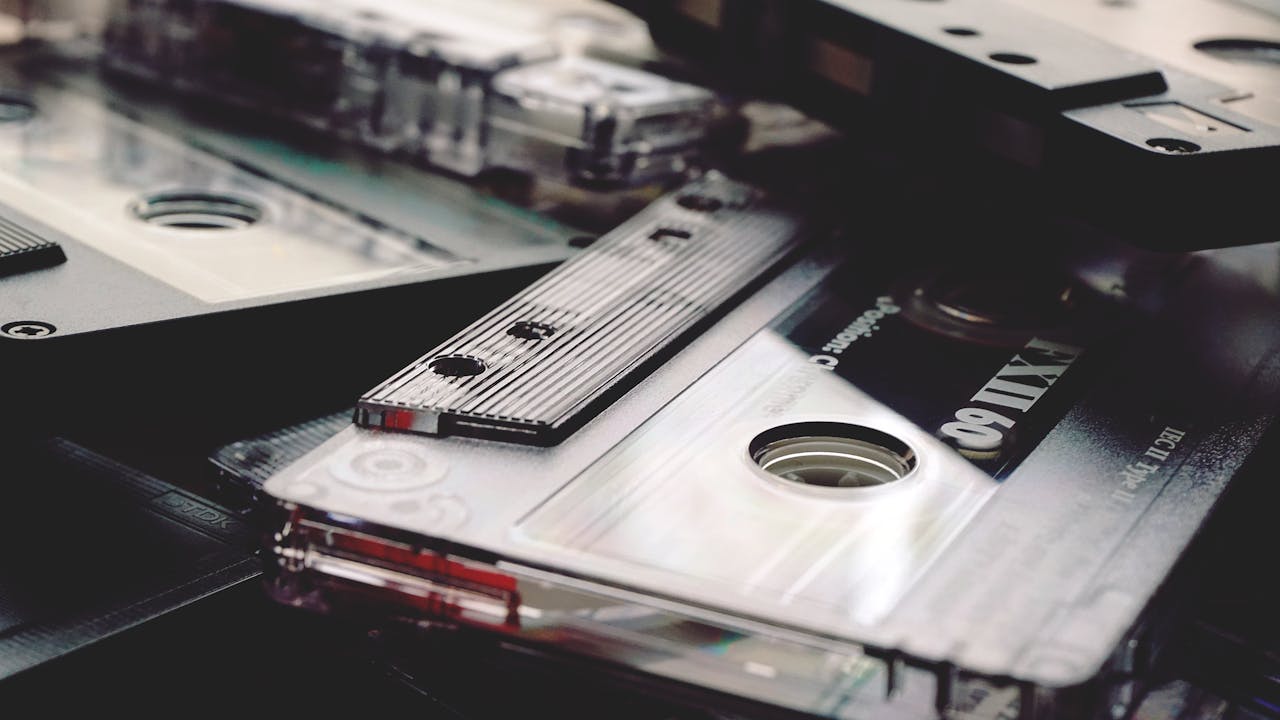If you grew up making mixtapes, you probably remember the unique experience of carefully choosing songs and recording them just right. It was more than just sharing music—it was about expressing feelings and creating something personal for yourself or someone else.
You miss the thoughtful process and the special connection that came with making mixtapes, something digital playlists rarely capture today. This article takes you back to those moments and the simple joys that mixtapes brought into your life.
Waiting for the perfect song to record without ads

You had to wait patiently as the radio played, hoping your favorite song would start.
Any interruption meant delaying your recording or starting over.
You learned to time it just right, catching the song before any ads or DJ chatter.
It made each mixtape feel more personal because of the effort you put in to avoid interruptions.
Sitting by the radio with finger on the record button

You remember waiting patiently, finger hovering over the record button. Timing was everything—you had to hit it just as your favorite song came on.
There was no pause or rewind, so you hoped you didn’t miss a single second. Sometimes, you even used a mic to catch better sound from the radio.
This simple act made creating a mixtape feel like a personal mission.
You can see more about this on Grown and Flown’s post.
Creating a mixtape cover with hand-drawn art

You get to personalize your mixtape cover with your own creativity. Drawing by hand adds a unique touch no digital design can match.
Even simple sketches or doodles make your tape stand out. It shows effort and makes the whole project feel more personal.
Your artwork can reflect the mood or theme of the music inside. This hands-on approach connects you to your mixtape in a special way.
Capturing a specific mood or moment in a mix

When you made a mixtape, you carefully chose songs to match exactly how you felt. It was like painting a soundtrack for a night, a road trip, or a special memory.
You weren’t just playing songs; you were setting a mood. Each track built up the feeling you wanted to share or remember, making the mix personal and unique.
This attention to mood made every tape more than music—it was an emotional snapshot you could hold onto. For more on mixtape memories, see Mixtape Memories.
The thrill of sharing a personalized music collection

You put time and thought into picking each song just for someone. It’s like giving a piece of yourself through music.
When your friend plays your mixtape, you share an experience that feels unique and personal. That connection is hard to match with streaming playlists.
Trying to fit songs perfectly on one tape side

You carefully planned each track to avoid leaving too much blank tape at the end. It was a challenge to make the songs fit just right without cutting anything off.
You might have rearranged the order multiple times to get the timing perfect. That balance between length and flow was key to a great mix.
This effort made each side feel like a small, thoughtful journey. It was part of the fun and the art of making a mixtape.
Discovering new artists through mixtape swaps

When you swapped mixtapes, you opened the door to new music you might never have found on your own. Each tape was a personal playlist, often introducing artists or songs your friends loved.
You trusted their taste, and these exchanges created a shared musical journey. It made discovering new artists feel more meaningful and connected to your social circle.
Check out more about the personal nature of mixtape-making here.
The anticipation of giving someone a mixtape gift

You spend hours choosing songs that mean something to you. Each track is carefully picked to share a part of your feelings.
Waiting to see their reaction feels exciting and a bit nerve-wracking. Giving a mixtape shows thoughtfulness in a way that feels personal and unique.
That mix holds a message only you could create, making the moment special when you finally hand it over.
For more on the mixtape experience, see this Reddit discussion.
Mixing songs from different genres seamlessly

When you made mixtapes, blending songs from different genres was a fun challenge. You had to find ways to match tempos or smooth transitions by ear.
You learned how drum and bass could flow into hip hop or how rock could follow soul without feeling awkward. It taught you to listen closely and get creative with timing and order.
That skill still helps you appreciate how different sounds can work together in surprising ways. For more on mixing genres, check out examples of mixing distinct genres.
Counting seconds to avoid blank space at the tape’s end

When you made a mixtape, you had to carefully time each song. You counted seconds to make sure you didn’t leave awkward silence at the end of the tape.
It took patience to fit songs perfectly within each side’s limit. That little blank space was like wasted real estate you wanted to avoid.
You learned to be precise, sometimes trimming or swapping tracks just to get the timing right.
Recording off the radio and hoping for no DJ interruptions

You had to be ready at the exact moment your favorite song came on the radio. Fingers hovered over the record button, waiting for the perfect start.
The biggest fear was the DJ talking over the intro or commercials cutting into your recording. Every second counted in making a smooth mixtape track.
This mix of patience and luck made recording from the radio a real skill you rarely find today. See more about this here.
The patience needed to rewind and fix recording mistakes

You had to pay close attention while recording to avoid blank spots or cutting off songs.
When mistakes happened, rewinding and hitting record to patch them was a test of patience.
It wasn’t instant like today. You carefully fixed errors, often listening back multiple times to get it right.
That slow process made each mix feel more personal and worth the effort.
This is something many who made mixtapes still remember fondly. Making mix tapes was a sacred art form.



Leave a Reply